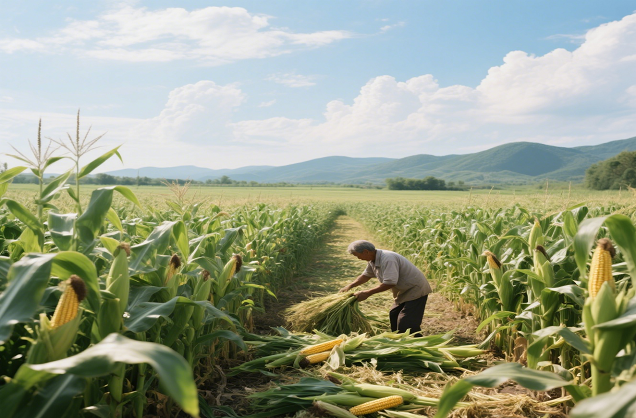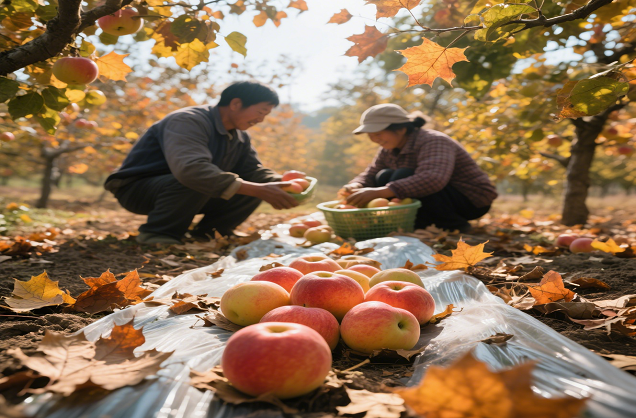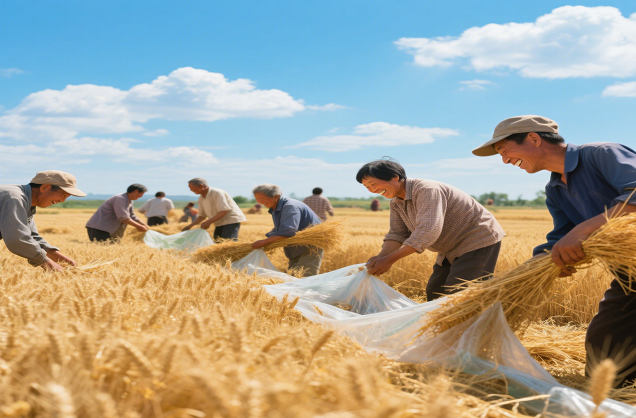The Degradable Materials Revolution: A Brief History of PLA, PBAT and Corn Starch
In the battle against global plastic pollution, PLA (polylactic acid), PBAT (polybutylene adipate/terephthalate), and corn starch, as the three pillars of biodegradable materials, have been game changers in packaging and agriculture.

PLA: From Medical Wizard to Environmental Pioneer
1930-1960: An Unexpected Discovery in the Laboratory
- 1954: DuPont obtained the first PLA synthesis patent (US2668162)
- PLA cost more than $1,000 per kilogram during this period, limited to high-end medical research
1970-1990: The Golden Age of Medicine
- 1966: U.S. Army Institute of Surgical Research develops PLA absorbable sutures.
- 1974: PLA bone nails were first successfully used for clinical fracture fixation
- 1987: Shimadzu Corporation in Japan built a pilot PLA production line
After 1997: A new era of environmentally friendly materials
- 1997: NatureWorks was founded, starting the first year of PLA industrialization.
- 2003: PLA prices fell below the $3/kg mark for the first time.
- 2023: global PLA production capacity exceeded 800,000 tons, accounting for more than 40% of China
Second, PBAT: the green reversal of petroleum-based materials
1920-1960: accumulation of basic science
- 1928: German chemists synthesized aromatic-aliphatic copolyester for the first time.
- 1950s: DuPont developed PBAT precursor technology for specialty fibers.
1990s: Environmental awareness leads to breakthroughs
- 1993: BASF launches the “Ecoflex” secret development program.
- 1998: First commercially available PBAT at a price of US$15/kg.
- 1999: PBAT is certified compostable by the European Union (EN13432).

The Rise of Chinese Power
- 2005: CAS breaks through the technical barrier of PBAT localization
- 2016: JDF built Asia's largest PBAT production line
- 2022: China's PBAT production capacity accounts for 75% of the world, and the price drops to $2/kg
Third, corn starch: the oldest modern solution
19th century: the dawn of industrial application
- 1840: Britain granted the first starch modification patent
- 1890s: starch started to be used in paper and textile sizing
The awakening of environmental awareness
- 1973: The oil crisis leads to a boom in starch-based plastics research
- 1985: Novamont, Italy, launches first starch-based shopping bag
- 1990: Starch-based plastics are produced in 10,000 tons for the first time.
A New Era of Technology Integration
- 2008: Starch/PLA composites break through the strength bottleneck
- 2015: Film with 30% starch content reaches PE mechanical properties
- 2023: the global starch-based plastics market size of 3.5 billion U.S. dollars
Four, five milestones that changed the world
1.1997 PLA industrialization:
NatureWorks was founded
Production capacity: 14,000 tons/year
Price reduced from $1000/kg to $5/kg.
2.2005 China's technological breakthrough:
Chinese Academy of Sciences developed new PBAT process
Reduced production cost by 40
Promote the outbreak of Asian market
3.2015 Modified Starch Revolution:
Starch compatibilizer technology matured
Starch content increased to 50%
Significant improvement in product transparency
4.2020 Global Plastic Ban Wave:
67 countries implement plastic restrictions
Demand for biodegradable materials grows by 300
China's “Toughest Plastic Restriction” in force
5. 2023 Circular economy takes shape:
PLA/PBAT/starch ternary system is mature.
Degradation time can be controlled in 3-12 months.
Cost gap with PE narrowed to 20

Future Prospects of Materials Science
Technological frontier breakthrough:
- Fourth-generation PLA: Corbion launches new varieties with heat resistance of 120°C in 2022
- Intelligent PBAT: BASF releases photo-biological dual degradation formula in 2023
- Nanostarch: MIT develops nanostarch composites with 5-fold increased strength by 2021
Market Growth Forecast:
- Global Degradable Plastics Market Size:
2023: $8.2 billion
2025 (forecast): $12 billion
2030 (forecast): $28 billion
- Regional Distribution:
Asia: 58% market share
Europe: 23 percent
North America: 15 percent
 For PLA/PBAT biodegradable mat
For PLA/PBAT biodegradable mat
 Price war! PBAT raw material p
Price war! PBAT raw material p
 PBAT degradation speed increas
PBAT degradation speed increas
 From Policy to Practice: Impli
From Policy to Practice: Impli
CONTACT
Add: Room 4006, No.1 Helong Yiheng Road, Baiyun District, Guangzhou City
Tel: +8613450255948
Wechat : +86-13450255948
Fax: +86-13450255948
E-mail: 13450255948@163.com








